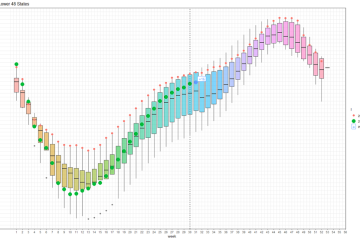Understanding the Differences: USA vs Switzerland

Introduction
The comparison between the United States of America (USA) and Switzerland is significant in understanding global dynamics. Both nations, though vastly different in size and population, offer unique insights into political structures, economic performance, and cultural identities. As global interactions increase, understanding these two countries can illuminate broader themes in international relations and cooperation.
Cultural Comparison
Culture serves as a hallmark of national identity, and the USA and Switzerland demonstrate this vividly. The USA, characterized by its diverse population and melting pot culture, features a broad range of influences from around the world. This cultural amalgamation has led to innovations in art, music, and cuisine.
Conversely, Switzerland is known for its rich heritage of traditions and languages, comprising German, French, Italian, and Romansh speakers. The Swiss pride themselves on their neutrality and multiculturalism, reflected in their impeccable public services, festivals, and culinary traditions, such as fondue and chocolate.
Economic Differences
Economically, the USA is one of the largest economies globally, with a GDP exceeding $21 trillion. It is a leader in technology, finance, and entertainment industries. In contrast, Switzerland, while much smaller, boasts a highly developed economy with a GDP around $800 billion. Notably, Switzerland is recognized for its banking sector, pharmaceuticals, and high-quality goods. The disparity in economic size reveals the USA’s global influence, while Switzerland exemplifies stability and high living standards.
Political Structures
Politically, the two nations operate under differing systems. The USA functions as a federal republic with a presidential system that emphasizes checks and balances. Democracy is rooted in a two-party system where the voters’ voices dictate policy through elected officials.
Switzerland, on the other hand, employs a unique form of direct democracy that allows citizens to participate in decision-making through referendums. This system encourages public engagement and regional autonomy, which has made it a model for participatory governance.
Conclusion
The ongoing comparison of the USA and Switzerland reveals diverse approaches to culture, economy, and governance. As global challenges evolve, understanding the strengths and weaknesses of different nations becomes crucial. While the USA represents dynamic innovation and influence, Switzerland exemplifies stability, democratic engagement, and quality of life. Observing both will provide valuable lessons for policymakers and citizens in navigating the increasingly interconnected world.









